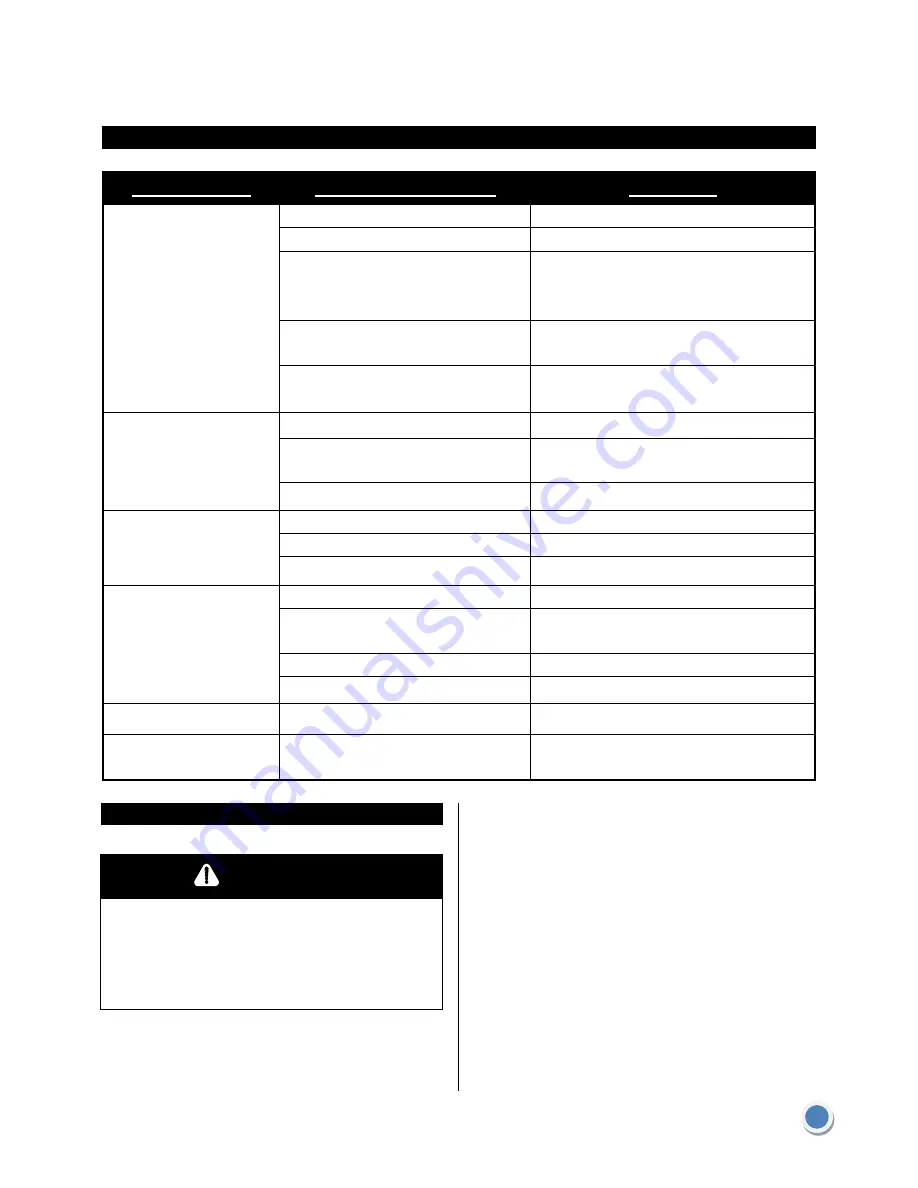
11
Troubleshooting
If the problem is:
And this condition exists:
Then do this
Pilot won’t light
Cylinder valve is closed
Open valve
Blockage in orifice or pilot tube
Clean or replace orifice or pilot tube
Air in gas line
Open gas line and bleed it (pressing control
knob in) for not more than 1 - 2 minutes or until
you smell gas
Low gas pressure with cylinder valve
fully open
Turn cylinder valve OFF and replace cylinder
Note:
Heater
operates
at
reduced efficiency below 40ºF
(5ºC)
Igniter fails
Use match to light pilot; obtain new igniter and
replace
Pilot won’t stay lit
Dirt built up around pilot
Clean dirt from around pilot
Connection between gas valve and
pilot assembly is loose
Tighten connection and perform leak check
Thermocouple is not operating correctly Replace thermocouple
Burner won’t light
Gas pressure is low
Turn cylinder valve OFF and replace cylinder
Blockage in orifice
Clear blockage
Control knob is not in ON position
Turn control knob to ON
Burner flame is low
Gas pressure is low
Turn cylinder valve OFF and replace cylinder
Outdoor temperature is less than 40ºF
and tank is less than 1/4 full
Use a full cylinder
Supply hose is bent or kinked
Straighten hose
Control knob fully ON
Check burner and orifices for blockage
Carbon build-up
Dirt or film on reflector and burner screen Clean reflector and burner screen
Thick black smoke
Blockage in burner
Remove blockage and clean burner inside and
outside
Maintenance
WARNING
FOR YOUR SAFETY:
• Do NOT touch or move heater for at least 45 minutes
after use.
• Reflector is hot to the touch.
• Allow reflector to cool before touching.
Air flow must be unobstructed. Keep controls, burner,
and circulating air passageways clean. Signs of possible
blockage include:
a. Keeping the appliance area clear and free from combustible
materials , gasoline and other flammable vapors and liquids.
d. Visually checking burner flames , with pictorial representations.
e. Cleaning the appliance , including special surfaces , with
recommended cleaning agents , if necessary.
f. Lubrication of moving parts and the type and amount of lubricant
to be used.
g. When applicable , visually checking portions of the hose
assembly located within the confines of the heater post.
b. Not obstructing the flow of combustion and ventilation air.
c.Keeping the ventilation opening(s) of the cylinder enclosure
free and clear from debris.































